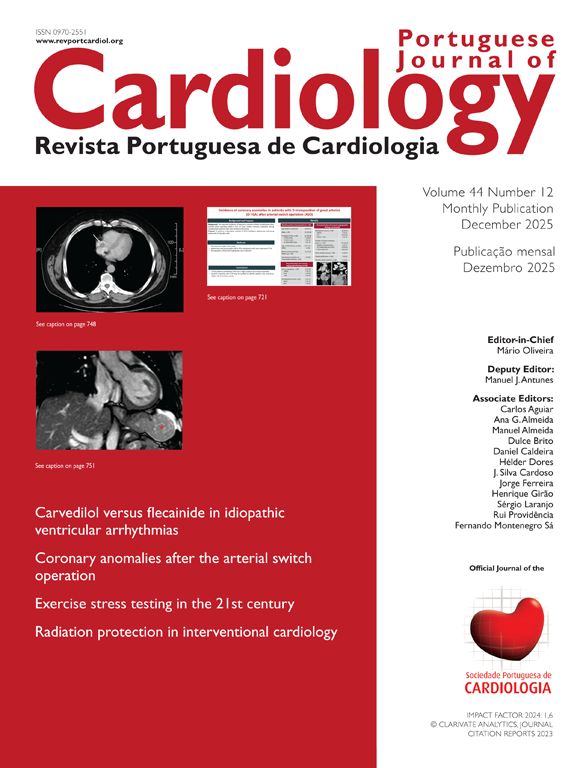It is commonly reported that women experience delays in diagnosis and access to both invasive and non-invasive cardiology interventions compared to men.1,2 This disparity is also evident in cardiac rehabilitation programs.3 They have been shown to increase functional capacity and health-related quality of life, and to reduce hospitalization rates. However, they have no effect on overall or cardiovascular mortality in patients with heart failure (HF), as was incorrectly stated in the Introduction to the paper under review.4
Women are less frequently referred to cardiac rehabilitation programs, partly due to the erroneous perception among referring physicians that they are less likely to participate. Additionally, women face more barriers to joining these programs because of their social roles within families and communities, as well as reduced personal availability resulting from sociocultural factors.5 These factors are also related to the design of these programs, which often cater more to male participants.
Older age, a higher burden of comorbidities, negative perceptions regarding the value and practice of physical exercise, reduced family support, time conflicts due to domestic responsibilities or caregiving duties, and difficulties with transport, are among the most commonly cited barriers by women. These challenges could be mitigated by implementing hybrid or home-based programs with remote supervision and enhanced psychosocial components to address anxiety and depression, which tend to be more prevalent in women with cardiovascular disease.6
Adult women generally prefer less intense activities, such as dance (due to its social and recreational appeal), yoga, tai chi, or water aerobics, which are perceived as less strenuous compared to ergometer training, typically offered in cardiac rehabilitation programs and more appealing to men.7 In addition to exercise type, programs oriented toward women should provide flexible schedules, accommodate family and professional responsibilities, strengthen the psychosocial component, employ female-specific motivational and educational strategies, and utilize technological and community-based approaches to facilitate access and sustained participation.
Andreia Campinas et al.,8 in their article ‘Effectiveness of a cardiac rehabilitation program in women with heart failure’ (Rev Port Cardiol 2025; xx: xxx-xxx), present the results of a prospective study conducted at a center in the north of Portugal, comparing the benefits of their cardiac rehabilitation program in a population of 93 HF patients, of whom 32.3% (n=30) were women. This study had a higher proportion of female participants than the typical 20–30% cited in the scientific literature. Women in the study were of similar age, body mass index, comorbidities, and treatment profiles compared to men, but differed in having significantly higher mean ventricular ejection fraction (42% vs. 34%, p=0.002), a higher prevalence of HF with preserved ejection fraction (20% vs. 3.2%, p=0.013), and non-ischemic etiology (48.4% vs. 20.0%, p=0.012).
The authors found that both sexes achieved comparable improvements in peak oxygen consumption and in the global and physical domain scores of the Minnesota Living with Heart Failure Questionnaire (MLHFQ), with women achieving gains similar to men. They concluded correctly that women should not be excluded from such interventions and that the timing of referral to a cardiac rehabilitation program is critical for success.
The women in this study participated in a standard cardiac rehabilitation program without any modifications tailored to female preferences. Nonetheless, adherence among women was similar to that of men. The cardiac rehabilitation program consisted of 24 training sessions over 12 weeks (two sessions per week), which is below the frequency recommended in international guidelines for HF patients (3–5 sessions per week for 12–24 weeks).9 This may have contributed to the modest VO2 improvements observed: 1.5±2.1 ml/min/kg in women and 1.2±2.4 ml/min/kg in men, lower than the average 2–4 ml/kg/min typically reported in the literature.10 Although female adherence was lower (77%) than male adherence (87%), both were above the 66.5% average reported in a recent meta-analysis,11 which is a credit to the center staff for a good therapeutic relationship with the program participants.
It is also worth noting that the cardiopulmonary exercise tests (CPET) conducted before and after the program in women must be classified as submaximal, given their mean respiratory exchange ratio (RER) values of 1.02 and 1.03, respectively, for the CPET before and after the program. In contrast, men achieved RER values of 1.10 and 1.11. The average RER value achieved by women (around 1.02–1.03) falls below the 1.10 threshold established by national and international scientific societies to classify a CPET as near-maximal or maximal.12 This standard also applies to women, despite their lower muscle mass and strength, higher estrogen levels that promote fat rather than lipid use, and lower tolerance for high-intensity exertion.
The patients in the program under consideration had their aerobic exercise intensity prescribed based on a percentage (60–80%) of peak oxygen consumption and not on the ventilatory thresholds method, which is the recommended procedure for this purpose.13 As peak exercise RER on women's CPET was clearly submaximal, they may have received an aerobic exercise training prescription below the target, since they did not reach 100% (or a nearby) of their VO2 max value.
Another point that may impact this finding is the lack of data on participants’ body weight changes throughout the cardiac rehabilitation program. Since VO2 gains are expressed indexed to body weight, any increase, due to muscle mass gains or reduced cardiac cachexia, could affect VO2 outcomes. The authors also do not provide details on the progression of training loads during the program in terms of aerobic and resistance training, progression of training heart rate during the cardiac rehabilitation program, or the nature of unsupervised training, possibly performed by the participants (men and women), all of which could have influenced the observed outcomes.
An interesting finding is the comparison of MLHFQ scores between men and women: although women showed greater improvements than men in global and physical dimension scores, they did not experience an improvement in the emotional domain score. This suggests that, unlike men, women may not experience parallel emotional gains despite physical improvements, possibly due to their distinct psychological profiles, higher comorbidity burdens, and older age.
Despite its limitations, this article deserves commendation for its contribution to understanding the local center's reality and for being, as far as I am aware, the first national publication addressing this topic. Its findings align with those of international peer-reviewed publications that demonstrate women with HF – regardless of whether it is due to reduced or preserved ejection fraction or varied etiologies, can achieve comparable participation rates and physical and health-related quality of life improvements in cardiac rehabilitation programs as men, even when the programs are not adapted to their exercise preferences or specific needs. These findings highlight the importance of ensuring women are equally referred to cardiac rehabilitation programs, that barriers to their participation are actively addressed, and that cardiac rehabilitation programs centers must tailor their interventions to meet women's preferences and needs through more flexible scheduling and program customization. This would enable more women with HF to enjoy increased functional capacity, improved health-related quality of life, and reduced hospitalization rates like men, as consistently reported in the medical literature.4
Conflicts of interestThe author has no conflicts of interest to declare.





